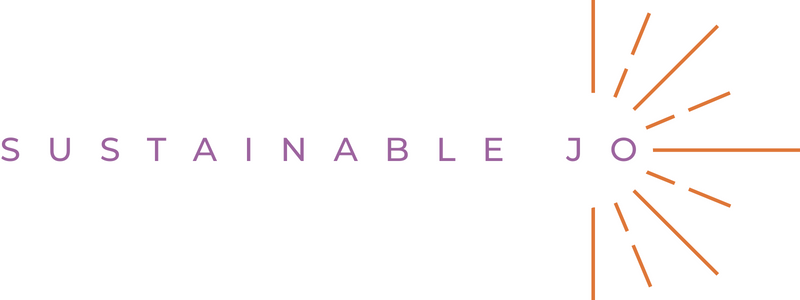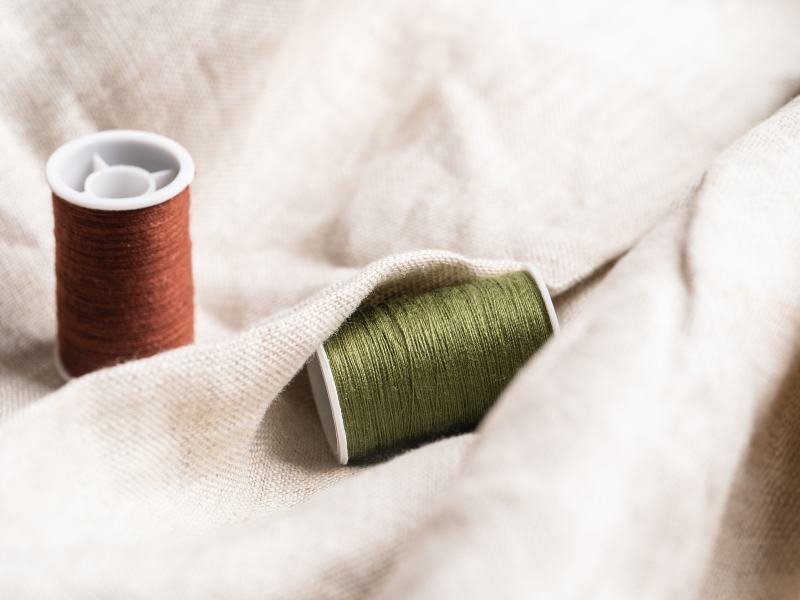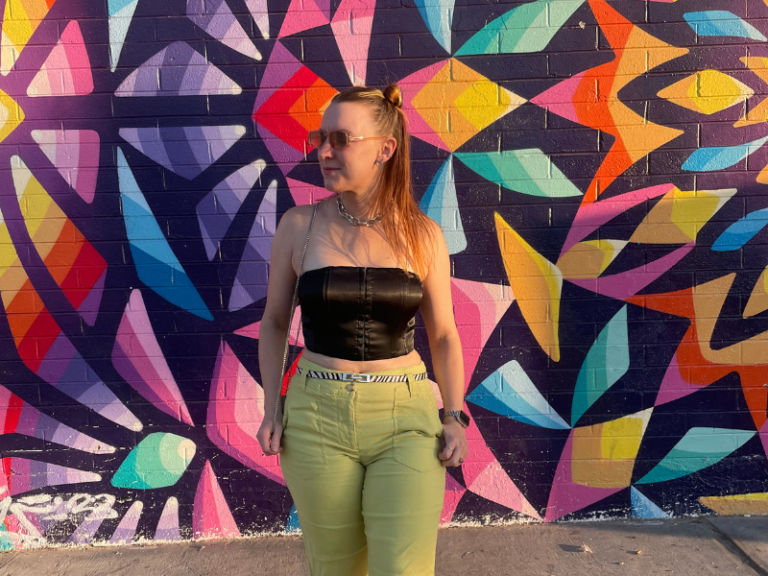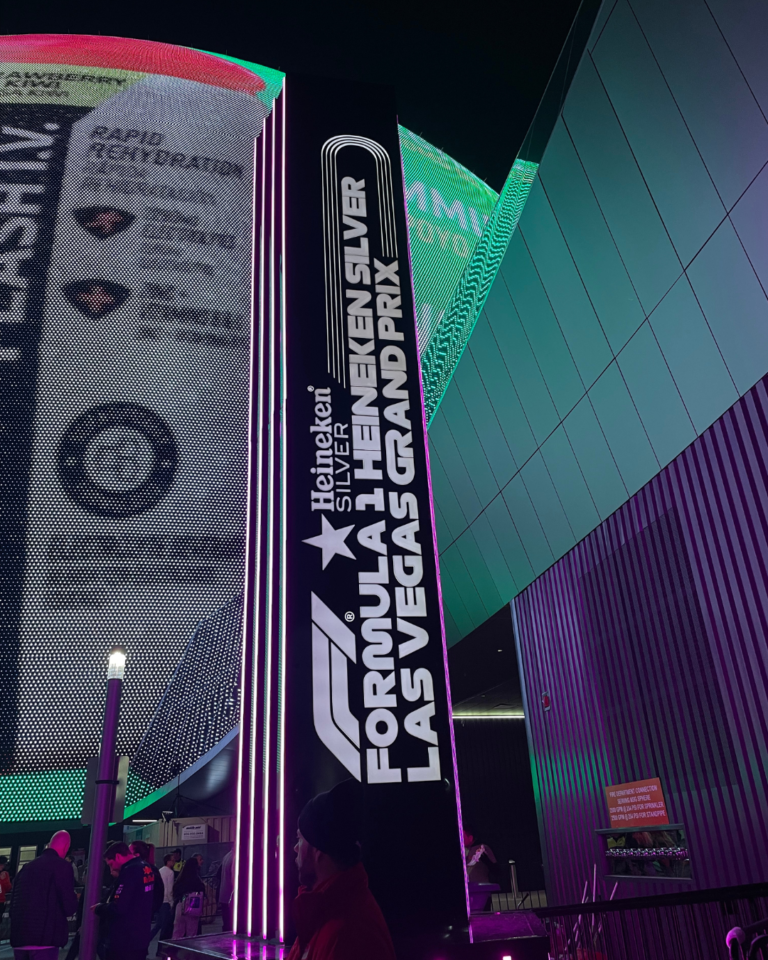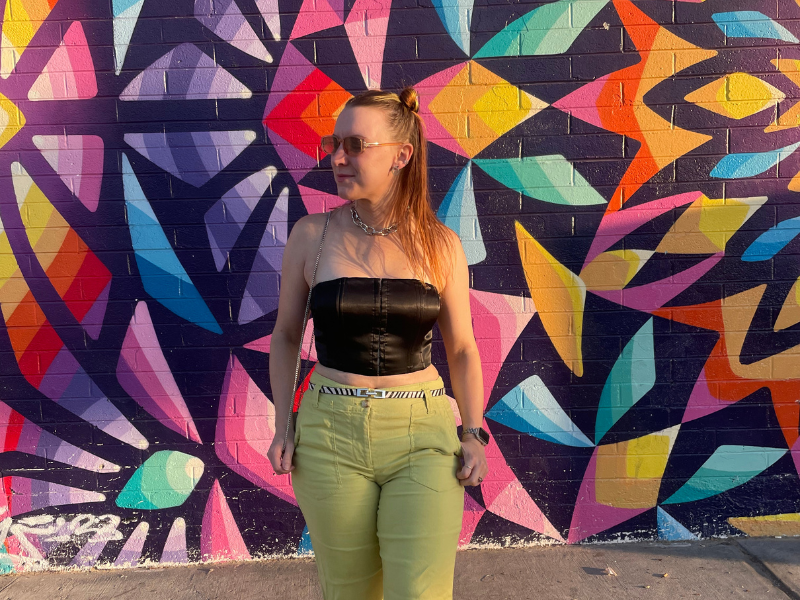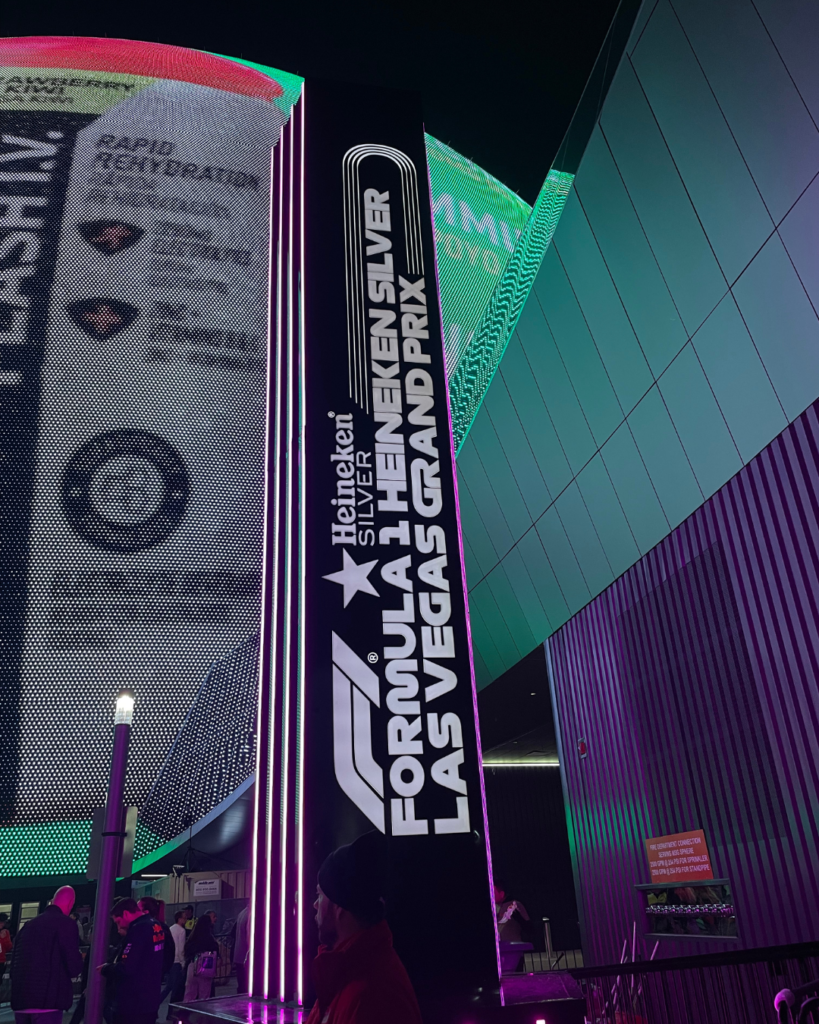
Ever scrolled through Shein and wondered, “Why’s everything so darn cheap?” I feel you. Let’s unravel the secrets behind Shein’s prices, unpack the heavyweights in fast fashion, and shine a light on why these brands are all the rage. But it’s not just glitz and glam; there’s a darker side too. Fast fashion has its own set of issues, and we’re diving deep into the whirlpool – from why we should say no to it to questioning if it’s the planet’s biggest polluter. And hey, it’s not all doom and gloom. We’re flipping the script to explore sustainable clothing brands, from the most eco-friendly threads to the lowdown on affordable non-fast fashion brands. So, join me as we navigate the highs, lows, and everything in between in the fashion universe.
What are Some of the Major Fast Fashion Brands?
Let’s kick things off by delving into some examples, the major players in the fast fashion scene. Brace yourself because you’re likely to know quite a few of these names. Renowned for their lightning-fast production cycles, budget-friendly offerings, and a laser focus on trends, these are the heavy hitters. Prepare to meet some of the main players in this trendsetting game:
1. Zara: Known for its quick response to fashion trends and frequent turnover of inventory, Zara is a Spanish retailer with a global presence.
2. H&M: A Swedish multinational clothing retail company, H&M is one of the largest chains globally, offering a wide range of affordable and trendy clothing.
3. Forever 21: An American retailer, Forever 21 is known for its budget-friendly and youthful fashion offerings. It has a significant presence in the United States and other countries.
4. Shein: An online-based brand, Shein has gained popularity for its extremely affordable and trendy clothing, but it has created a dark side of fashion. It operates globally and frequently updates its inventory to reflect current fashion trends.
5. Primark: A budget-friendly retailer based in Ireland, Primark is known for its low prices and a wide range of clothing, accessories, and home goods.
6. Boohoo: A UK-based online fashion retailer, Boohoo is recognized for its low-cost and trend-driven clothing, particularly targeting a young demographic.
7. Fashion Nova: An American-based online fashion retailer, Fashion Nova is known for its fast turnaround of trendy clothing items, especially popular on social media platforms.
8. Amazon: While offering a different approach to fast fashion, Amazon offers casual wear and is known for its affordable basics and functional clothing with a quick production cycle.
The discontent with these brands stems from concerns about the environmental impact, labor practices, and ethical considerations associated with fast fashion. Sustainable fashion advocates seek a paradigm shift, calling for increased transparency, fair labor practices, and a commitment to reducing the industry’s ecological footprint. The aim is to encourage these brands to adopt more sustainable and ethical approaches, fostering positive change within the fashion industry to align with the values of conscious consumers.

Why are Clothes from Shein so Cheap?
Clothing from fast fashion brands like Shein is often priced inexpensively due to various factors within their business model. These brands prioritize mass production, rapidly manufacturing large quantities of clothing at a low cost. To achieve this, they commonly use lower-quality materials, favoring synthetic fabrics like polyester for their cost-effectiveness. Outsourcing manufacturing to countries with lower labor costs is another strategy, enabling these brands to take advantage of reduced production expenses. Fast fashion companies, including Shein, emphasize quick turnaround to replicate popular designs swiftly and stay ahead of fashion trends.
Simplicity in design is a characteristic of many fast fashion items, avoiding intricate details and reducing manufacturing complexity. Additionally, these brands often limit marketing costs by relying heavily on digital platforms and social media for promotion, minimizing traditional advertising expenses. Some brands, like Shein, operate primarily online, adopting an online-only model to decrease overhead costs associated with physical stores. While these cost-saving measures contribute to the affordability of fast fashion, it’s essential for consumers to be aware of the environmental and social impacts, including concerns about ethical clothing brands production practices, labor exploitation, and environmental degradation. Making informed choices about clothing purchases, considering sustainability and ethical considerations, can contribute to more responsible consumer behavior.
What is Sustainable Fashion and Why is it on the Upswing?
Sustainable fashion refers to clothing, accessories, and footwear that are designed, produced, and consumed with consideration for the environmental, social, and economic impact. The goal is to minimize the negative effects of industry on the planet and its people. Sustainable fashion involves using eco-friendly materials, ethical production practices, reducing waste, and promoting fair labor conditions throughout the supply chain.
Several factors contribute to the increasing trend of sustainable fashion:
1. Environmental Awareness: Growing concerns about climate change, pollution, and resource depletion have led consumers to seek environmentally friendly alternatives. Sustainable fashion addresses these concerns by using eco-conscious materials and production processes.
2. Ethical Values: Consumers are increasingly valuing ethical considerations such as fair labor practices and humane working conditions. Sustainable fashion brands often prioritize social responsibility and transparency in their supply chains.
3. Consumer Demand: There’s a rising demand from consumers for products that align with their values. Many individuals are willing to support brands that demonstrate a commitment to sustainability, prompting the fashion industry to respond to this shift in consumer preferences.
4. Transparency and Accountability: With increased access to information, consumers are demanding more transparency from fashion brands. Sustainable fashion brands that disclose their production practices and sources of materials are gaining trust among consumers.
5. Innovations in Materials: Advancements in technology have led to the development of sustainable materials, such as organic cotton, recycled polyester, and alternative fabrics made from plant-based sources. These materials offer eco-friendly alternatives to traditional ones.
6. Circular Fashion Economy: The concept of a circular fashion economy, where clothing is designed for longevity, recyclability, and reduced waste, is gaining traction. Brands adopting circular fashion principles contribute to the trend of sustainability.
7. Regulatory Changes: Governments and international organizations are introducing regulations and standards to promote sustainable practices in the fashion industry. This has encouraged brands to adopt more environmentally friendly and socially responsible approaches.
8. Influencer and Celebrity Endorsement: Influencers and celebrities have a significant impact on consumer behavior. Many influencers are using their platforms to promote sustainable fashion, influencing their followers to make eco-conscious choices.
The combination of environmental consciousness, ethical considerations, and consumer demand is driving the upswing in sustainable fashion. As awareness grows and more consumers prioritize sustainability, the fashion industry is responding by incorporating eco-friendly practices into its production and consumption patterns.

Affordable and Trendy Non Fast Fashion Brands
Embracing affordable and trendy fashion doesn’t have to involve supporting fast fashion. Several non fast fashion brands prioritize sustainability and ethical practices while offering stylish options. Everlane is renowned for its transparent pricing model and commitment to ethical manufacturing, providing modern basics at reasonable prices. For those seeking unique finds, exploring local thrift stores or online platforms like thredUP and Poshmark offers a sustainable and budget-friendly alternative.
People Tree stands out as a sustainable fashion brand, emphasizing Fair Trade practices and environmentally friendly materials in their affordable and stylish clothing. Pact, specializing in organic cotton, offers a range of comfortable basics with a focus on fair labor practices and sustainable manufacturing. United By Blue not only provides trendy clothing but also contributes to environmental causes, particularly known for its eco-friendly outdoor apparel. ABLE, with a mission to empower women, offers ethically made and affordable clothing, accessories, and shoes.
Sustainable brands like Reformation, combines fashion-forward styles with eco-friendly materials and transparent production practices. Tradlands focuses on timeless and well-crafted essentials, promoting sustainability in their products. In summary, here are some affordable and trendy non-fast fashion brands:
– Everlane: Transparent pricing and ethical manufacturing.
– Thrift Stores and Second-Hand Shops: Sustainable and budget-friendly options.
– People Tree: Fair Trade practices and eco-friendly materials.
– Pact: Affordable organic cotton basics with ethical practices.
– United By Blue: Trendy clothing with a commitment to environmental causes.
– ABLE: Ethically made clothing, accessories, and shoes empowering women.
– Reformation: Sustainable brand with fashion-forward styles.
– Tradlands: Timeless and sustainable essentials.
All of these brands are trendy sustainable clothing brands that you can easily make the swap too.
What is the Most Sustainable Type of Fashion?
The most sustainable type of fashion embraces a holistic approach that prioritizes environmental and social responsibility throughout the entire lifecycle of a garment. Slow fashion, a core principle, advocates for the production of high-quality, durable garments with a longer lifespan, encouraging consumers to make mindful and lasting choices rather than engaging in fast fashion trends. Sustainability in fashion also entails ethical production, emphasizing fair labor practices, safe working conditions, and fair wages for all workers involved in the manufacturing process. Choosing the best clothing brands affordable made from organic and sustainable materials like organic cotton, hemp, bamboo, or Tencel is another crucial aspect that reduces the environmental impact associated with conventional fabrics.
Supporting local and artisanal production contributes to sustainability by reducing the carbon footprint associated with transportation and fostering traditional craftsmanship. Upcycling and recycling, as well as minimal waste design, are practices that directly address the issue of textile waste in the industry. Circular fashion, which focuses on recyclability, reusability, and waste reduction, aligns with the principles of a circular economy. Transparency is a key element, as brands that openly share information about their supply chain, sourcing practices, and overall impact are considered more sustainable.
Encouraging the creation of capsule wardrobes, consisting of a few versatile and timeless pieces, promotes a more sustainable and intentional approach to fashion consumption. Additionally, embracing renting and second-hand shopping helps reduce the demand for new production, contributing to a more sustainable and responsible fashion industry. By considering these diverse aspects, individuals can play a significant role in promoting a fashion landscape that is both stylish and environmentally and socially conscious.

What are the Effects of Fast Fashion?
Disposable fashion, characterized by its rapid production and turnover of clothing collections, has profound effects on the environment, society, and the economy. One of the most significant concerns is its environmental impact, with the industry contributing to water pollution, high water consumption, and large amounts of textile waste. This disposable nature leads to a staggering volume of discarded clothing, exacerbating issues related to landfill overflow and waste management. In addition, the fast fashion model is associated with exploitative labor practices, as the pressure to produce quickly and at low costs can result in poor working conditions, low wages, and job insecurity for workers in the supply chain.
The demand for fast clothing also takes a toll on natural resources, contributing to resource depletion, particularly in terms of water, land, and energy. The carbon footprint of the industry is substantial, with mass production and long-distance transportation of goods significantly increasing greenhouse gas emissions. Furthermore, the lack of transparency in these supply chains raises ethical concerns, as consumers may be unaware of the conditions under which their clothes are produced and the environmental impact of manufacturing processes. Socially, quick fashion perpetuates a culture of overconsumption and materialism, with a constant focus on new trends and cheap clothing. This approach may lead to a loss of traditional craftsmanship and cultural heritage in the fashion industry. Addressing these challenges necessitates a shift towards more sustainable and ethical practices, including embracing slow fashion principles, promoting transparency, and encouraging responsible consumption habits among consumers.
Why Should We Say No to Fast Fashion?
Rejecting fast fashion is imperative due to its multifaceted impact on the environment, society, and ethics. The environmental consequences are stark, with fast fashion contributing to high water consumption, chemical pollution from dyes, and the generation of extensive textile waste. By refusing to support fast fashion, individuals play a role in mitigating these environmental concerns and promoting sustainable practices within the industry. The disposability of clothing in fast fashion leads to a significant volume of textile waste, making a stance against it crucial to reduce the burden on landfills and encourage responsible consumption.
Another critical reason to reject fast fashion lies in its association with labor exploitation. The pursuit of low production costs often results in poor working conditions, low wages, and job insecurity for workers in the supply chain. Saying no becomes a stand against such exploitative practices, advocating for fair labor conditions and ethical treatment of those involved in the manufacturing process. Additionally, the demand for fast fashion contributes to resource depletion, including the overexploitation of water, land, and energy resources. Opting out of these cheap trends supports a more sustainable utilization of these precious resources within the fashion industry.
Moreover, fast fashion fosters a culture of overconsumption, where clothing is treated as disposable, and trends change rapidly. Rejecting this quick turnaround fashion is a call for mindful and intentional consumption habits, promoting a shift towards a more sustainable and considered approach to fashion. Beyond this, the fast fashion model can lead to a loss of traditional craftsmanship and cultural heritage within the industry. Saying no to fast fashion aligns with the preservation of authenticity and cultural values in fashion.
Human rights violations are also associated with the fashion industry, as the pressure for quick and cheap production can compromise the well-being of workers. By refusing to support disposable fashion, individuals stand against exploitation and advocate for brands that prioritize ethical sourcing and fair treatment of workers. Ultimately, rejecting these types of brands encourages sustainable practices by contributing to the growing demand for ethical alternatives, such as slow fashion brands, ethical production methods, and the use of sustainable materials. This conscious choice empowers consumers to play an active role in shaping a more sustainable and responsible future for the fashion industry.

Why is it such a Big Issue
Fast fashion is a significant issue due to its wide-ranging and detrimental impacts on the environment, society, and ethical considerations. Some of the major fast fashion problems include:
1. Environmental Degradation: Rapid fashion pollution contributes extensively to environmental degradation. The industry is associated with high levels of water consumption, pollution from chemical dyes and treatments, and substantial amounts of textile waste. The rapid turnover of clothing and the extensive use of synthetic fabrics further exacerbate these environmental challenges.
2. Textile Waste: It encourages disposable clothing, resulting in a staggering amount of textile waste. The continuous production of cheap and short-lived garments contributes to overflowing landfills, posing significant challenges for waste management and environmental sustainability.
3. Exploitation of Labor: The pressure to produce clothing quickly and at low costs often leads to unethical labor practices. Workers in the supply chain may face low wages, long working hours, poor working conditions, and job insecurity. This exploitation is a serious ethical concern associated with the industry.
4. Resource Depletion: The demand for micro-trends in fashion contributes to the overexploitation of natural resources, including water, land, and energy. The extraction of raw materials and the production processes involved place a strain on these resources, leading to environmental imbalances.
5. Carbon Footprint: The production, transportation, and disposal of fashion items contribute significantly to the industry’s carbon footprint. Mass production often involves long-distance transportation, increasing greenhouse gas emissions and contributing to climate change.
6. Cultural Impact: The emphasis on rapid turnover and imitation of trends can lead to a loss of traditional craftsmanship and cultural heritage in the fashion industry. Authenticity and cultural values are often compromised in the pursuit of quick and inexpensive production.
7. Encourages Overconsumption: The fast fashion model fosters a culture of overconsumption, where clothing is treated as disposable, and trends change rapidly. This constant cycle of buying and discarding garments has serious implications for sustainability and the efficient use of resources.
8. Human Rights Violations: The drive for quick and cheap production can result in human rights violations. Workers may be subject to unsafe working conditions, inadequate wages, and exploitation. This exploitation of labor is a significant ethical concern associated with the fashion industry.
The fast fashion industry’s negative impacts on the environment, society, and ethical standards make it a pressing and complex issue that requires attention and a shift toward more sustainable and responsible practices within the fashion industry.
Is it the Biggest Polluter?
The fast fashion environmental impact is undeniably a significant contributor to environmental pollution, leaving a profound impact on various ecosystems and scarce resources. Alarming statistics highlight the extent of this impact, shedding light on the urgent need for sustainable practices within the industry.
One of the major environmental concerns associated with fast fashion is water pollution. The extensive use of chemical dyes and treatments in textile processes leads to the contamination of water sources. According to estimates, textile dyeing stands as the second-largest contributor to water pollution globally, responsible for releasing around 20% of industrial water pollutants. This pollution poses threats to aquatic life and ecosystems, emphasizing the need for more environmentally friendly dyeing practices.
The rapid turnover and disposable nature of fast fashion contribute significantly to textile waste. Shockingly, statistics from the Ellen MacArthur Foundation reveal that the equivalent of one garbage truck of textiles is either landfilled or burned every second. This incessant disposal of clothing adds immense pressure to waste management systems and exacerbates the environmental burden of overflowing landfills.
Resource depletion is another critical issue tied to fast fashion, particularly in water-intensive processes like cotton cultivation. The demand for cotton, a staple in the fashion industry, leads to considerable water usage and land degradation. As consumers increasingly demand affordable and quickly produced garments, the strain on natural resources intensifies, necessitating a reevaluation of sustainable sourcing practices.

Download my guide to the top 25 sustainable brands today
Moreover, the carbon emissions associated with fast fashion are substantial. The industry’s reliance on mass production and global supply chains contributes to approximately 10% of global carbon emissions. The environmental toll of transporting materials and finished goods across vast distances is evident, making it imperative for the industry to explore more localized and sustainable production models.
Hazardous chemicals used throughout the fashion production cycle further compound environmental degradation. From the cultivation of raw materials to dyeing and finishing processes, these chemicals pose risks to both ecosystems and human health. Addressing this challenge involves a transition toward eco-friendly and non-toxic alternatives, emphasizing the importance of responsible chemical management.
While pinpointing a single “biggest polluter” can be complex. Urgent efforts are required to reform production practices, embrace sustainable sourcing, and encourage a shift toward circular fashion models that prioritize longevity, reuse, and recycling. Only through concerted action can the fashion industry mitigate its environmental footprint and move towards a more sustainable and responsible future.
Thanks for Entering the Chat!
Alright, I’ve jsut given you everyhting i possibly can about fast fashion, dug into why Shein’s a budget-friendly haven, and side-eyed the big shots in the industry. But let’s talk real talk – fast fashion’s got its issues, and it’s time to rethink our choices. Saying no to fast fashion isn’t just about clothes; it’s a stand against unfair labor practices, environmental mess-ups, and a culture of overconsumption. As we wave goodbye to fashion’s fast lane, we’re entering the world of sustainable vibes – where affordable and chic meet eco-conscious. It’s not just about looking good; it’s about making choices that feel good too. So, as we wrap up this style adventure, remember: Fashion’s not just about what you wear; it’s about the mark you leave on the world.

